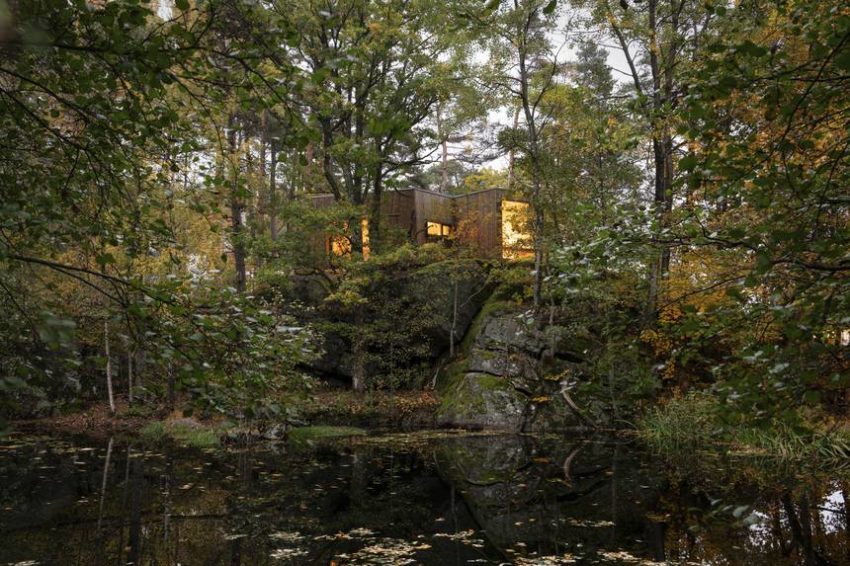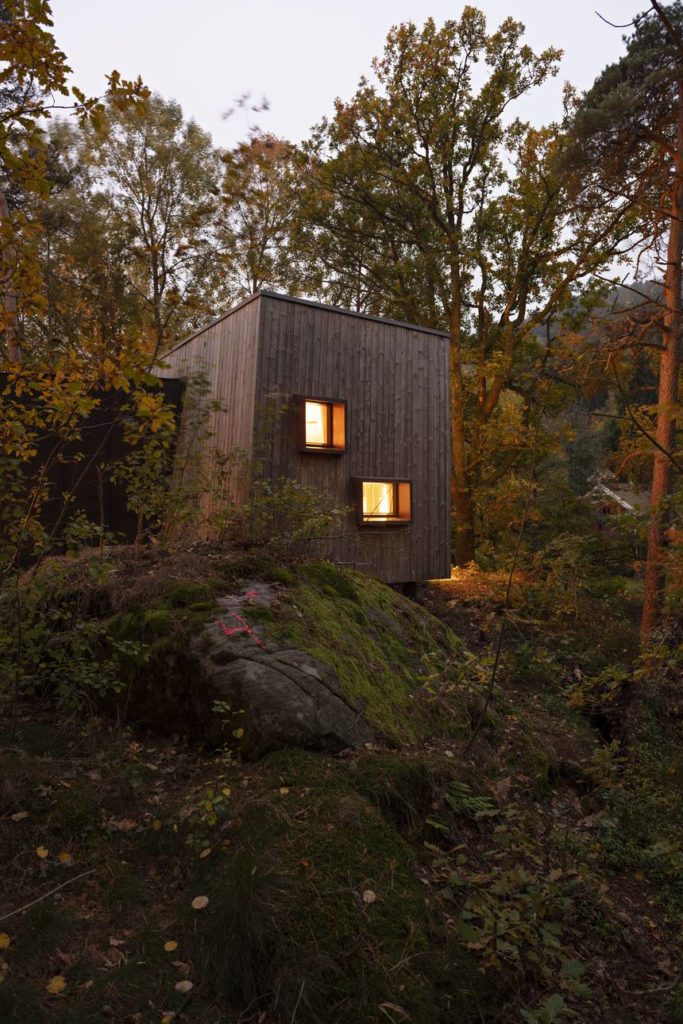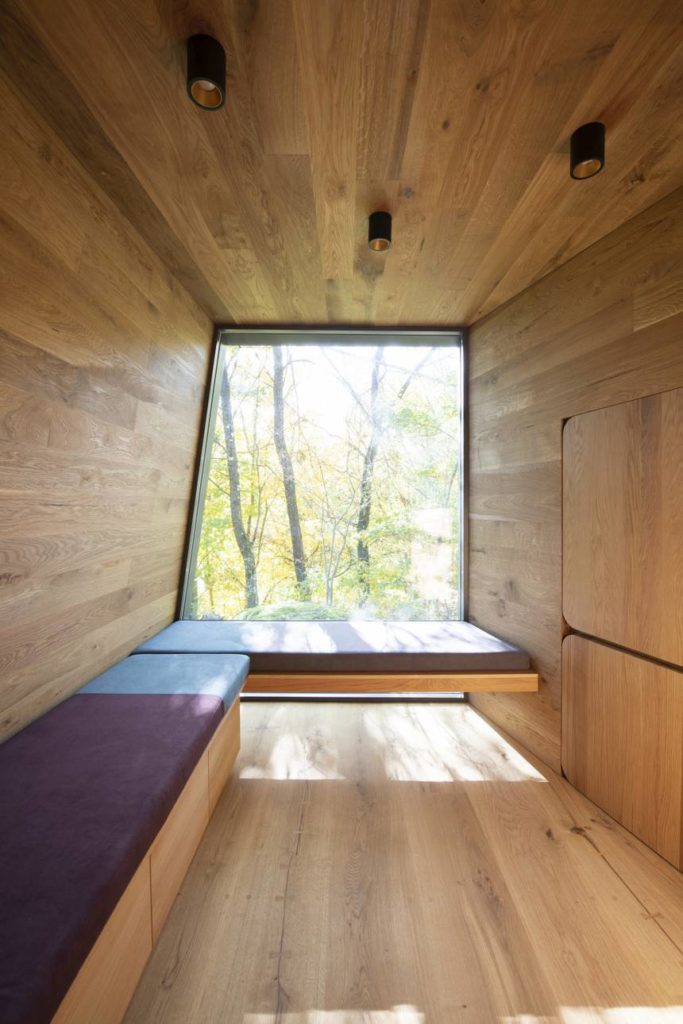The Outdoor Care Retreats help patients by letting them get the benefits from being in nature and separating them from the sterile hospital environment.
Hospitals are amazing places and we are very fortunate to have them. They are on the other hand not very inspiring. Stark and sterile, they don’t have a lot of soul and have many strict rules. Sure, they are extremely good at healing our physical selves but they can be a bit lacking in helping emotional well-being. This is especially true today because we now know how important emotional well-being is to our physical health.
That is why Norway is taking the first step forward and have found a workaround to this problem, focusing specifically on young patients. If we all know that spending time outside has many health benefits why not allow sick children to have some more time outside in nature?
So that’s why the two largest hospitals in Norway, with the help of the Friluftssykehuset Foundation charity, created the Outdoor Care retreats more commonly known as friluftssykehuset. Their architectural partner is the firm Snøhetta. The spaces they constructed offer patients a reprieve of all the stringent treatments and isolation that comes with long-term hospital stay.
The meaning of the word friluftssykehuset comes from the Norwegian concept of friluftsliv – the importance of spending time in nature and the word sykehus – which means hospital. The first retreat was built in a forest near the biggest Norwegian Hospital, Oslo University Hospital. The other building is close to a pond in a deciduous forest by Sørlandet Hospital Kristiansand in the South of Norway.
Jennifer Guay explains how these buildings came to be.
Maren Østvold Lindheim, a child psychologist from the hospital in Oslo has been taking kids out in the forest for years “It started with just a few children at a time,” Guay writes. “soon, they were bringing groups into the forest to build fires and canoe on a nearby lake.” Unfortunately only kids that were well enough could make the trip through the forest. This gave Lindheim the idea of creating dedicated spaces that would make the outdoors accessible to more children.
“Bringing patients outside the hospital helps them relax and find the strength to get through their treatment,” says Lindheim. “Being in nature gives them the feeling of possibility: they have more energy, more hope and more creativity.”
Made to look like tree houses and forts, the 375-square foot space are accessible to wheelchair users and the entrances allow enough room for hospital beds too. Snøhetta describes them, “the luminous cabins are formed like skewed blocks of wood that extend into the landscape through asymmetrical branches.” The interiors are made from oak to create harmony with the surroundings. The exterior will eventually fade to gray and become more and more looking like the landscape.
Inside you can find a main room, a more private room, and a bathroom. Colorful pillows allow the children to use their imagination freely in any way they want.
“Nature provides spontaneous joy and helps patients relax. Being in natural surroundings brings them a renewed calm that they can bring back with them into the hospital. In this sense, the Outdoor Care Retreat helps motivate patients to get through treatment and contribute to better disease management,” says Lindheim.
A round skylight gives plenty of opportunity for tree gazing and the large panel windows cane be opened fully making the line between inside and outside even smaller. Snøhetta says that, “In this way, visitors can peek into the woods, smell the damp forest floor, and listen to the sound of trickling water while still being inside the cabin.”
Even though the cabins are comfy and spacious, most of the time the children play outside, especially around the fire pit. They also stay outside even in frigid temperatures. This is hardly surprising, knowing that Scandinavian children are introduced to the healthy splendors of low temperatures from a very young age. The kids also like to fish, chop wood, shoot arrows and paint pictures, nothing like your typical hospital environment.
The cabins can be used by children up to 18 years old with their doctor’s permission of course. Parents can also come during visits. Older patients can also visit because the cabins have no age-restriction in the afternoons and weekends.
“Although the cabin is integrated in the hospital campus, its secluded location and natural aesthetics allows it to be perceived as a place of its own. It is a place of muted magic, a place out of the ordinary that provides a generous and much-needed breathing space for visitors of all ages,” notes Snøhetta.
The idea of using the outdoors for recovery is nothing new. Victorians used to go in the mountains and mineral baths in search for good health. Recently, the Japanese government are urging people to do the shinrin yoku, or “forest bathing”, telling people to go out and use the wooded areas of the country for therapy. Yet the idea of bringing nature into modern hospitals is revolutionary, especially the fact that the dirty rough-and-tumble nature is anything but similar to the hospital environment. The Friluftssykehuset Foundation wants to build even more Outdoor Care Retreats in Norway and abroad. Now is a good time as any to start this. Nature is waiting, why not we embrace it and use its help.
Credits: Snøhetta and the Friluftssykehuset Foundation.




